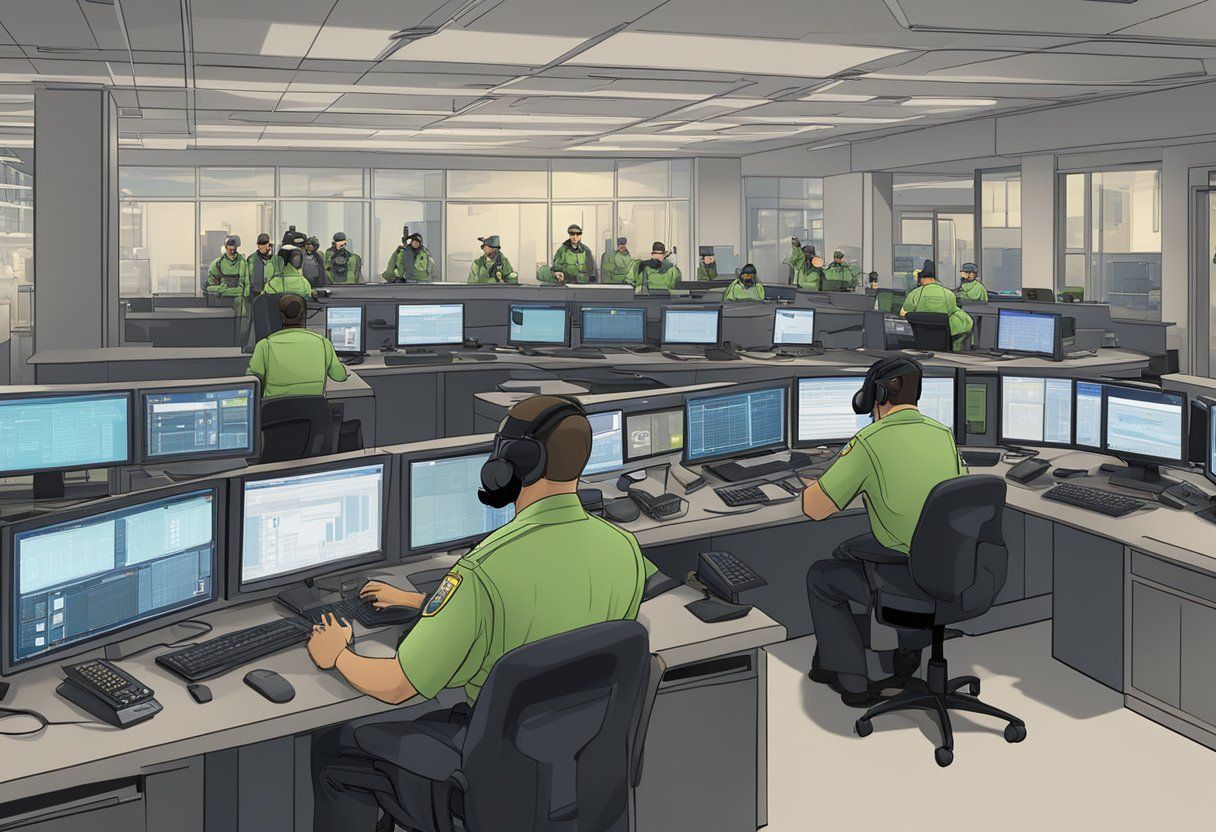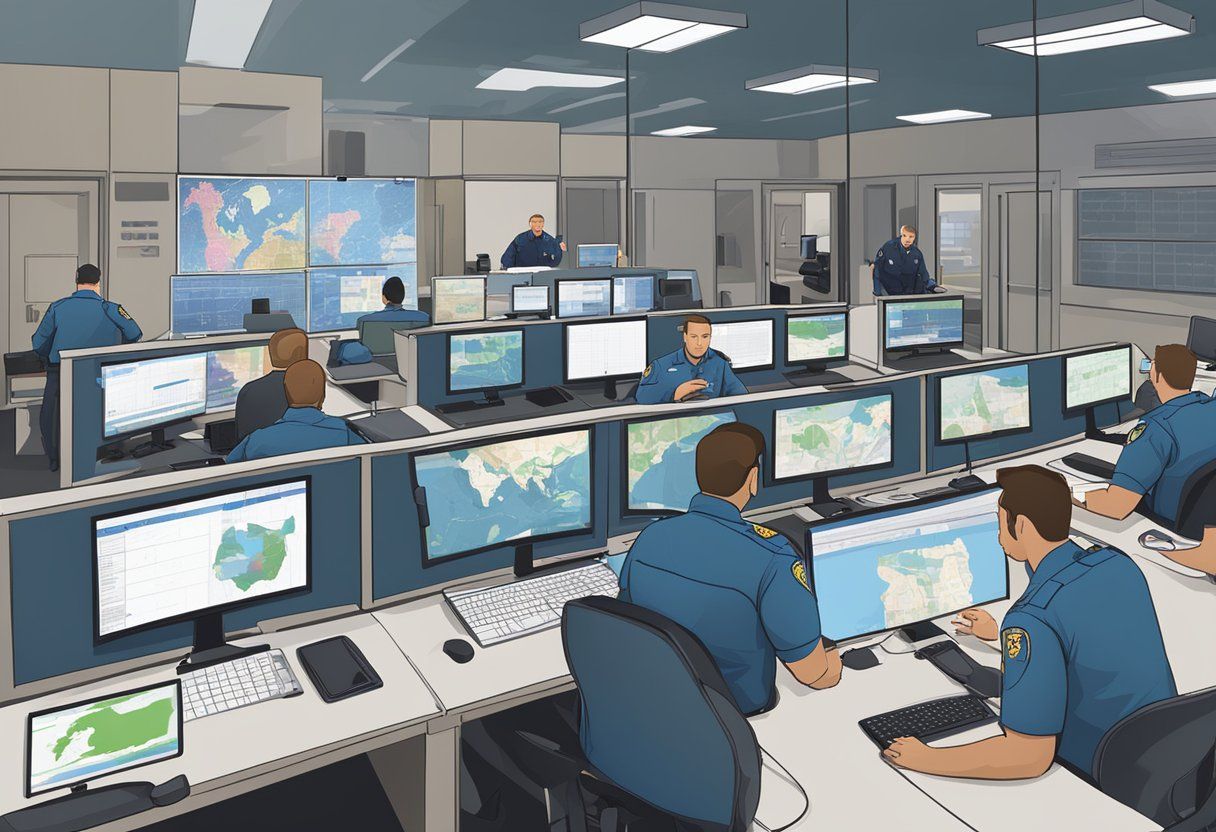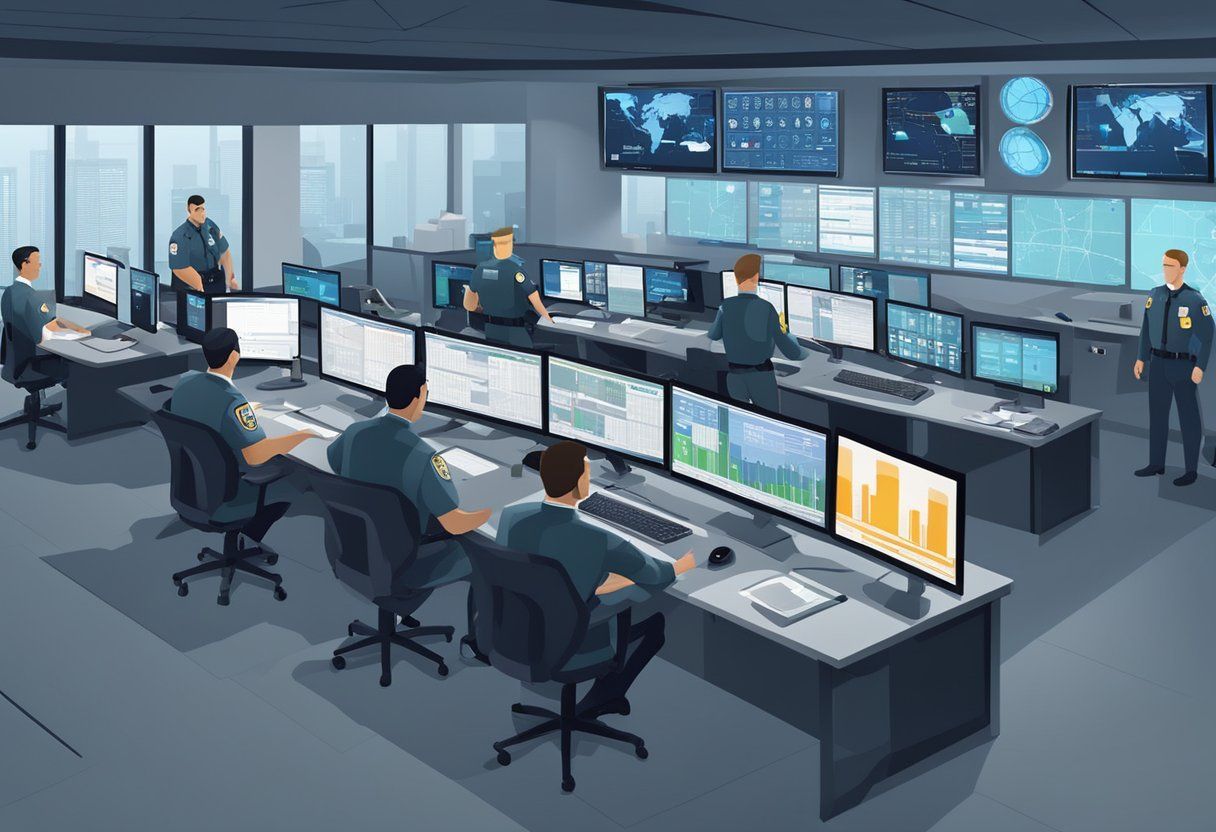Real-Time Crime Centers Are Transforming Policing: Data-Driven Law Enforcement in Action
Real-time crime centers have emerged as powerful tools in modern policing, revolutionizing how law enforcement agencies respond to and solve crimes. These specialized units leverage cutting-edge technology to monitor public spaces, analyze data, and provide crucial information to officers in the field.
Since the New York City Police Department introduced the first such center in 2005, many other cities have followed suit, recognizing the potential for enhanced crime prevention and investigation.

These centers utilize a wide array of technologies, including video surveillance systems , license plate scanners, and body cameras.
They also incorporate advanced tools like gunshot detection systems, facial recognition software, and artificial intelligence-driven video analytics.
While these technologies offer significant benefits for public safety, they have also sparked debates about privacy and potential misuse, prompting the need for robust safeguards and accountability measures.
Key Takeaways
- Real-time crime centers use advanced technology to assist police in solving and preventing crimes
- These centers have shown potential in reducing both violent and property crimes in some areas
- Proper safeguards and accountability measures are crucial to address privacy concerns and prevent misuse
Rapid Response and Support

Real-time crime centers operate 24/7, providing crucial assistance to law enforcement. These centers supply officers with live video streams and essential data during incident responses.
They also monitor ongoing events like protests or potential threats to key infrastructure.
Some advanced centers utilize drones as initial responders. These unmanned aircraft transmit real-time footage from the field, enhancing situational awareness.
This technology allows for quick assessment of unfolding situations.
These centers play a vital role in post-incident investigations too. They can:
- Track suspect vehicle movements
- Collect video evidence for legal proceedings
- Identify potential locations of gun casings at crime scenes
This advanced support often leads to quicker case resolutions. Investigators can frequently locate suspects within hours rather than days.
Law enforcement agencies increasingly partner with businesses and large organizations to expand their surveillance capabilities.
This collaboration grants access to existing CCTV networks in hotels, arenas, and other public spaces. It’s a cost-effective solution, as installing dedicated cameras can be expensive.
The integration of various technologies enhances overall effectiveness:
| Technology | Function |
|---|---|
| CCTV | Provides visual coverage of areas |
| Gunshot detection | Alerts to potential firearm discharge |
| Computer-aided dispatch | Coordinates response efforts |
These systems work together to improve response times and increase public safety. By providing real-time information and analysis, crime centers enable more efficient and effective policing strategies.
Growth and Effectiveness of Real-Time Crime Centers

Real-time crime centers have seen rapid adoption in recent years, with a 148% increase over the past four years. Approximately 150 law enforcement agencies now utilize these units.
Despite this growth, they remain a relatively new tool in policing, with less than 1% of agencies nationwide implementing them. Even among larger departments with substantial personnel and budgets, only 12% have integrated real-time crime centers.
The impact of these centers has been the subject of limited research. A 2019 evaluation of decentralized units in Chicago revealed:
- 3-7% decrease in violent and property crimes
- 5% increase in solving violent crimes
- 12% increase in solving property crimes
- 11% overall improvement in case clearance rates
A more recent study of the Miami Police Department’s real-time crime center found:
- 66% higher likelihood of clearing violent crime cases compared to those without center support
Real-time crime centers utilize various technologies:
- AI and machine learning
- Video analytics
- License plate readers
- Social media monitoring
- Geolocation data
- Cellphone tracking
While these technologies have shown promise in certain areas, their effectiveness varies across crime types.
For instance, real-time crime centers have demonstrated limited impact on sexual assault and domestic violence cases, likely due to the private nature of these offenses.
| Crime Type | Effectiveness |
|---|---|
| Property Crimes | High |
| Violent Crimes (general) | Moderate to High |
| Sexual Assault | Limited |
| Domestic Violence | Limited |
The integration of advanced technologies like artificial intelligence and deep learning continues to evolve, potentially enhancing the capabilities of real-time crime centers. However, further research is necessary to fully understand their effectiveness across all crime categories and to assess their long-term impact on law enforcement practices and outcomes.
Protecting Against Misuse
Law enforcement agencies must implement robust safeguards when utilizing advanced surveillance technologies. Privacy concerns are paramount, necessitating strict protocols for data handling and storage.
Agencies should maintain detailed logs of all searches and monitoring activities to ensure transparency and justify resource allocation.
Public access to records is crucial. Citizens can request information through Freedom of Information Act procedures or local agency records units, although fees may apply. Common materials include:
- Video footage
- License plate reader data
- Drone flight logs
Data retention policies vary based on offense severity. Minor infractions typically see records kept for 30-90 days, while homicide-related evidence may be preserved indefinitely. Ongoing investigations generally withhold data until case resolution.
Human verification plays a vital role in validating information and outcomes. This step helps mitigate potential biases and systemic issues in investigations.
Facial recognition technology usage policies, in particular, have undergone recent revisions to address concerns.
Transparency efforts extend to drone operations. Most of the 1,100+ agencies employing drones provide public access to live flight maps.
This openness aims to build trust, as departments recognize that negative community feedback could jeopardize program continuation.
Secure storage of sensitive information is essential. Agencies must employ robust cybersecurity measures to protect data from unauthorized access or breaches.
Regular audits and updates to security protocols help maintain data integrity and public confidence.
Body cameras have become a key tool for accountability. Clear policies governing their use, footage storage, and release are necessary to balance transparency with privacy concerns.
Widespread Adoption of Advanced Policing Technology
Real-time crime centers are becoming increasingly prevalent across the nation. These sophisticated hubs integrate various surveillance technologies, creating powerful tools for law enforcement agencies.
As police departments embrace these systems, they’re reshaping modern policing practices. The integration of dashboards, critical infrastructure monitoring, and extensive surveillance networks is transforming how officers respond to and prevent criminal activities.
Key Questions About Real-Time Crime Centers
How Do These Centers Boost Police Response?
Real-time crime centers enhance law enforcement’s ability to respond quickly and effectively to criminal activity. They aggregate data from various sources like surveillance cameras, license plate readers, and emergency calls.
This centralized information allows officers to make quicker, more informed decisions when responding to incidents.
What Technologies Are Used in These Facilities?
Common technologies in real-time crime centers include:
- Video surveillance systems
- Automated license plate readers
- Gunshot detection systems
- Social media monitoring tools
- Crime mapping software
- Drone technology for live streaming
How Do These Centers Affect Community Policing?
Real-time crime centers can support community policing efforts by providing officers with more comprehensive information about neighborhoods and ongoing issues.
This data-driven approach allows for more targeted and efficient allocation of police resources, potentially improving community-police relationships.
What About Privacy and Civil Liberties?
The use of extensive surveillance technologies in real-time crime centers raises important privacy concerns. Law enforcement agencies must balance public safety needs with individual privacy rights.
Policies and safeguards are often implemented to protect civil liberties, but debates continue about the appropriate use and limits of these systems.
Do These Centers Actually Reduce Crime?
Early studies suggest real-time crime centers may have a positive impact on crime reduction. A 2019 evaluation in Chicago found a 3% to 7% decrease in both violent and property crimes after implementing decentralized real-time crime centers.
However, more research is needed to fully understand their long-term effectiveness.
How Is Data Managed and Protected?
Data management in real-time crime centers involves:
- Secure storage systems
- Strict access controls
- Regular security audits
- Data retention policies
- Encryption of sensitive information
Protecting this data is crucial to maintain public trust and prevent misuse or unauthorized access.
Building better solutions for better business®




